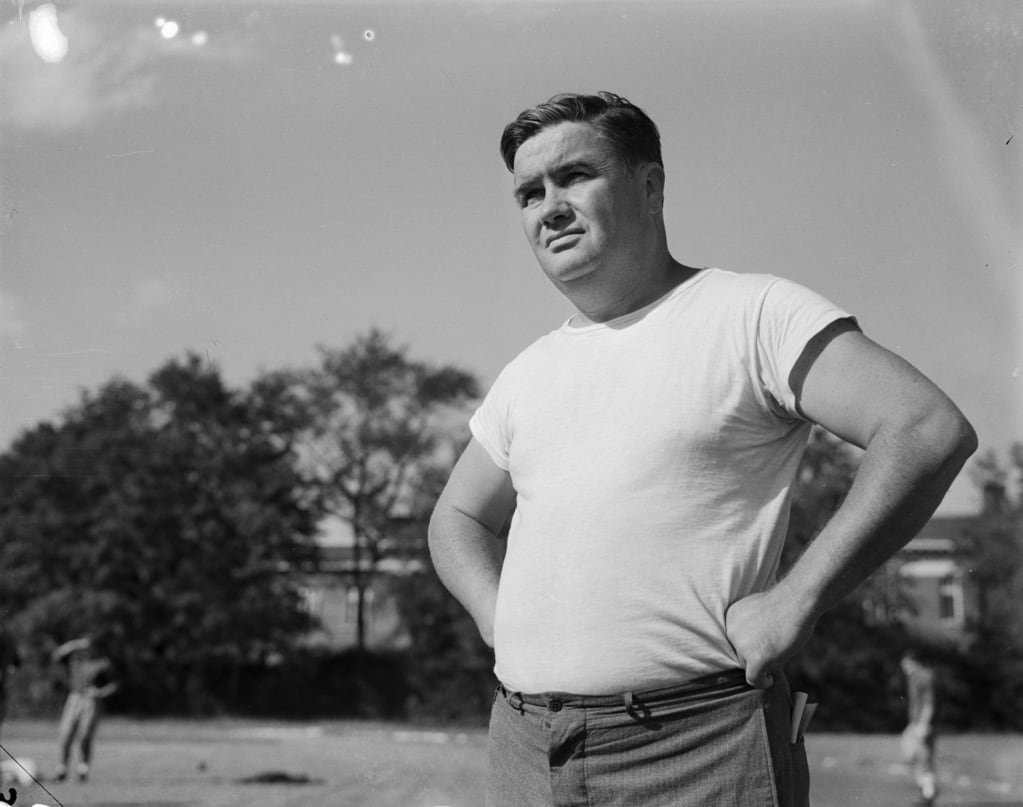EDITOR’S NOTE: Every day until Aug. 29, Creg Stephenson is
counting down significant numbers in Alabama football history
, both in the lead-up to the 2025 football season and in commemoration of the Crimson Tide’s first national championship 100 years ago. The number could be attached to a year, a uniform number or even a football-specific statistic. We hope you enjoy.
Alabama claims 18 national championships, and the vast majority of them are undisputable.
The last seven, of course, were unanimous thanks to college football’s set-up at the time. That includes 1992, 2009, 2011, 2012, 2015, 2017 and 2020 — all of which were won on the field in a 1 vs. 2 matchup or via a playoff (or both).
The 1979 national title is also largely unchallenged, as Alabama was the only undefeated major-college team left standing at the end of the season. The 1961 and 1965 championships are similar, as the Crimson Tide took care of business on the field and had a better case for No. 1 than anyone else.
The 1978 championship was split, with Alabama winning the AP title and USC claiming the top spot in the coaches poll. The Trojans had beaten the Crimson Tide head-to-head during the regular season, but Alabama then beat the No. 1 team — Penn State — in the Sugar Bowl (USC had lost to Arizona State shortly after beating the Crimson Tide).
The championships in 1964 and 1973 are a bit trickier, awarded prior to bowl games that Alabama lost (including a defeat to fellow unbeaten Notre Dame in the latter year). But that was the system in place at the time, so those claims are legitimate whether we now like the setup or not.
There was no official mechanism for crowning a national championship prior to the AP poll’s formation in 1936, which means Alabama’s titles from 1925, 1926, 1930 and 1934 were mostly claimed retroactively. But the Crimson Tide went undefeated and won or tied in the Rose Bowl (the only bowl game at the time), so those claims have to be considered as strong as anyone else’s.
Which brings us to 1941 … and frankly, there’s no defending it. Alabama went 9-2 that season, finishing third in the SEC with losses to Mississippi State and Vanderbilt and No. 20 in the final AP poll.
Oh, it was a good team. Frank Thomas’ Crimson Tide won at Tennessee, dealt Georgia its only loss of the season and beat Southwest Conference champion Texas A&M 29-21 in the Orange Bowl.
But a national champion? Hardly.
Minnesota went 8-0 in 1941, including victories over No. 3 Michigan (on the road) and No. 9 Northwestern, and outscored its opponents 183-38. The Golden Gophers did not play in a bowl game that year; the Big Ten’s automatic tie-in with the Rose Bowl was still five years away.
(Duke, 9-0 and ranked No. 2 nationally, lost to Oregon State 20-16 in the Rose Bowl. That was even with the game played on the Blue Devils’ campus due to World War II travel restrictions).
Minnesota was voted No. 1 in the AP poll, and was retroactively designated as “national champion” by 10 other outfits recognized by the NCAA. Alabama split the national title with the Golden Gophers under the Houlgate System, a strength-of-schedule formula created in the 1930s by Los Angeles-based college football statistician and historian Deke Houlgate.
How Houlgate’s system actually worked is mostly lost to history, as was Alabama’s 1941 national title until the 1980s. That’s when an Alabama sports information director named Wayne Atcheson “uncovered” five Crimson Tide national championships from first half of the 20th century.
Until Atcheson came along, Alabama claimed only seven national championships — 1934 and the six won by Coach Paul “Bear” Bryant (it’s worth noting that Bryant had played on the 1934 team). But after Atcheson’s detective work, the Crimson Tide suddenly claimed 11 national titles.
“I made the change because Coach Bryant had these 25 years and six national championships and they were emphasized so much,” Atcheson
told AL.com’s Jon Solomon in 2010
. “It was on all the stationery. And when I got there, it was a matter of seeing there were five others (before Bryant) and we should put them all together. It was as simple as that.
“I tried to make Alabama football look the best it could look and just make it as great as it could possibly be. I was a competitor myself with the other schools, and what they bragged about and boasted about, I wanted people to know the best about my school.”
Over the years, there have been unofficial movements for Alabama to dump the 1941 national championship and replace it with one to which the Crimson Tide has a more legitimate claim — such as 1945, 1966 or 1977. All three of those are also listed as “national champion” by at least one of the NCAA’s officially recognized selectors.
But nothing ever gained traction, particularly following the death of athletics director Mal Moore in 2013. Instead, Alabama’s claim 1941 national championship continues to be a punch line, and ammunition for detractors who would question the legitimacy of other Crimson Tide titles.
Coming Monday: Our countdown to kickoff continues with No. 40, perhaps Alabama’s first great overtime victory.








